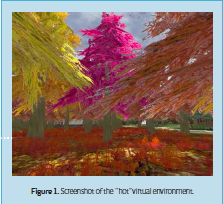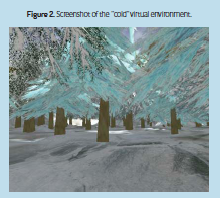By Andreas Mühlberger and Paul Pauli
Distraction techniques are frequently used for pain management. However, it is still a matter of controversy which components are necessary to enhance distraction during painful events and thus to reduce the experience of pain. As mentioned by Kate Miller et al. in this issue, these components may be constituted of multi- sensory, interactive, intuitive and motivating attributes. Basic research from our group repeatedly found that emotion is an important modulator of pain perception and pain experience. In comparison to neutral stimuli, negatively valenced visual stimuli, such as a picture of rotten food, enhanced pain perception, while positively valenced visual stimuli, like erotica, decreased perception of pain. Furthermore, pain-associated stimuli, such as pictures depicting mutilations, were found to further enhance pain experience, even compared to pain-unrelated negative stimuli. Importantly, these emotional effects are independent of distraction effects, although these studies verified that distraction generally reduces pain perception.
In recent years, mainly Hunter Hoffman and his group have impressively shown that virtual environments are important and impressively useful tools for pain management (see Hoffman article).

Although the efficacy of his team’s approach has been repeatedly demonstrated, many questions about the mandatory features of the treatment, as well as the underlying processes and mechanisms, remain unanswered. Is it necessary to use virtual worlds that are by no means associated with pain (e.g., winter environment to ameliorate burn pain)? Is the distraction or the elicited emotion relevant for pain management? To answer these questions, studies directly comparing effects of specific features of the virtual environment on pain perception are needed. These studies focusing on the basic processes and mechanisms may help to further improve treatment efficacy.
We recently investigated whether movement in a virtual world is an essential feature to affect pain perception and pain experience assessed as heat and cold pain thresholds. Results clearly demonstrated that movement and the possibility to look around in the virtual world, realized with a head tracking device, enhanced the pain reducing effect of this intervention. This study, however, does not answer the question of whether the movement in the virtual environment OR the enhanced interactivity due to the use of the head-mounted display is the core component reducing pain perception.

Another yet unanswered question is whether the content of the virtual world is important for the reduction of pain. Thus, we examined how “hot” (represented by red-colored autumn leaves, see Figure 1) and “cold” vir tual worlds (represented by a snow-covered winter environment, see Figure 2) affect heat and cold pain thresholds in the Enchanted Forest & Dream Castle virtual environment created by the Virtual Reality Medical Center. Our intuitive assumption was that virtual environments that do not correspond to the pain stimulus, and thus are less associated with the specific kind of pain, will more effectively reduce the experience of pain. For example, a white winter environment was expected to decrease heat pain while the red autumn environment was expected to reduce cold pain. Surprisingly, we did not find any differential effects of the two virtual environments–both ameliorated heat and cold pain perception. Clearly this single study is not sufficient to prove that the content of the virtual environment has no influence on the reduction of pain. Specifically, this was an analogue study investigating students and not pain patients, and dependent measures were experimentally but not clinically relevant pain stimuli. However, we think that studies of this kind which try to target how specific features of the virtual environment influence pain perception are necessary to enhance our knowledge of mechanisms that aid in distraction reducing pain. In the long run, these studies will allow us to further optimize the requirements of the virtual worlds to realize the best possible non-pharmacological pain management.
Andreas Mühlberger, Ph.D. Paul Pauli, Ph.D. University of Würzburg Germany muehlberger@psychologie.uniwuerzburg. de
About Brenda Wiederhold
President of Virtual Reality Medical Institute (VRMI) in Brussels, Belgium.
Executive VP Virtual Reality Medical Center (VRMC), based in San Diego and Los Angeles, California.
CEO of Interactive Media Institute a 501c3 non-profit
Clinical Instructor in Department of Psychiatry at UCSD
Founder of CyberPsychology, CyberTherapy, & Social Networking Conference
Visiting Professor at Catholic University Milan.







